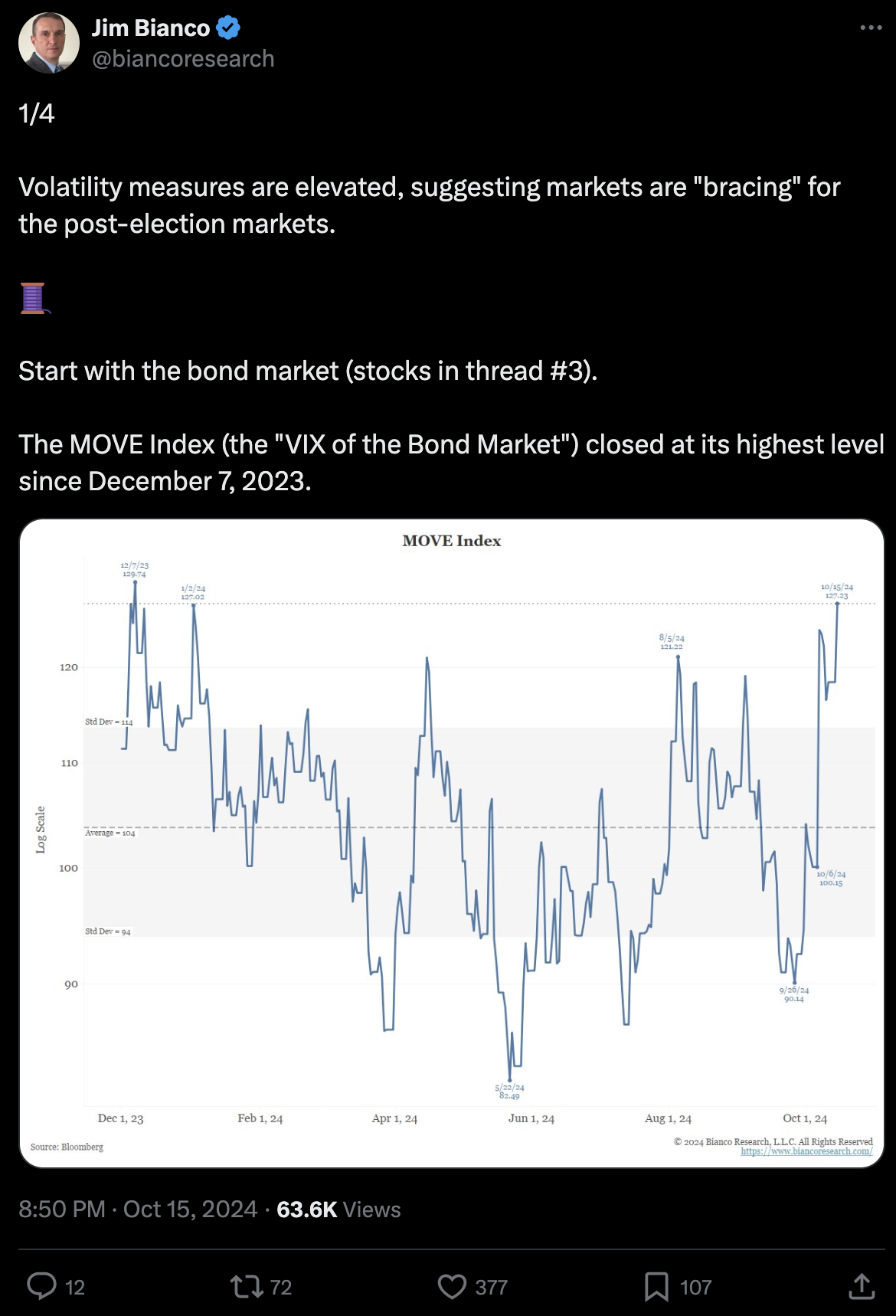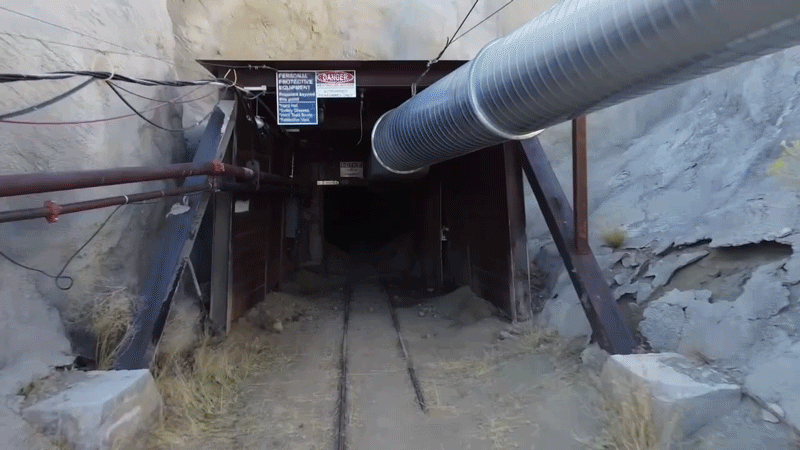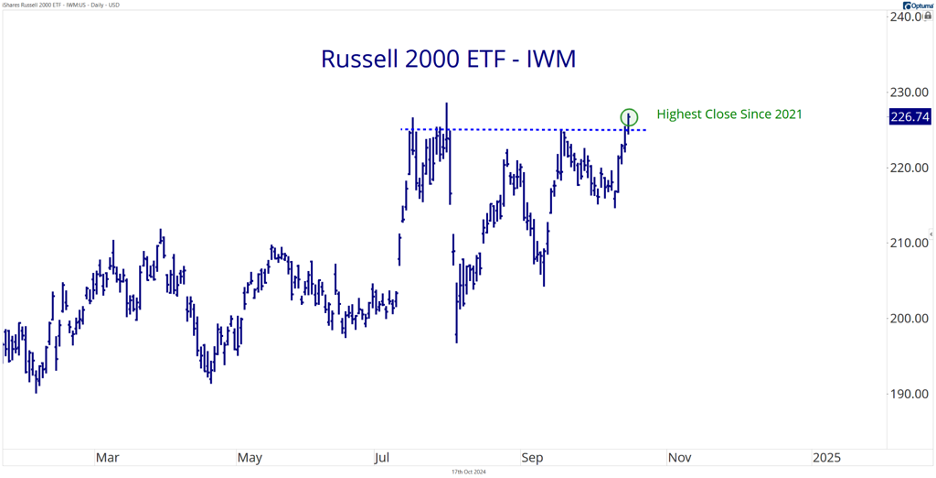Gold Outshines Government IOUs
![]() From Bonds to Bars
From Bonds to Bars
 Gold's star is rising as a potential safe-haven replacement for Treasury bonds in investors' portfolios, according to a recent Bank of America note.
Gold's star is rising as a potential safe-haven replacement for Treasury bonds in investors' portfolios, according to a recent Bank of America note.
The precious metal has been on a remarkable run, surging over 30% this year and reaching $2,707 an ounce on Thursday.
Several factors have fueled gold's ascent: central bank purchases, falling interest rates and emerging interest from U.S. retail investors.
(Even Costco shoppers, as we’ve mentioned from time to time, are getting in on the action, snapping up gold bars alongside their two-liter bottles of olive oil.)
Now, Bank of America commodity strategist Michael Widmer suggests that mounting concerns over U.S. debt levels could be a key driver of gold's price surge.
With the presidential election just 18 days away, neither candidate seems to have a solid plan to address the nation's ballooning debt.
 And it's not just Uncle Sam who's swimming in a sea of red…
And it's not just Uncle Sam who's swimming in a sea of red…
Widmer notes: “Spending commitments are likely to rise, as countries adapt to and tackle climate change, demographics become more challenging and defense spending likely goes up too.”
[More on tackling climate change in a moment.]
This global borrowing binge could make investors wary of sovereign debt, including Treasury bonds, potentially boosting gold's appeal.
“With lingering concerns over U.S. funding needs and their impact on the U.S. Treasury market, the yellow metal may become the ultimate perceived safe-haven asset,” says Widmer.
He's sticking to his guns with a $3,000 price target for gold. (As we mentioned yesterday, in January, Paradigm’s own Zach Scheidt predicted $3,000 gold by the end of 2024.)
 Comparing gold and Treasury bonds reveals some interesting contrasts. While Treasury bonds offer guaranteed returns and TIPS provide built-in inflation protection, gold's allure lies in its potential as a hedge against currency devaluation and economic uncertainty.
Comparing gold and Treasury bonds reveals some interesting contrasts. While Treasury bonds offer guaranteed returns and TIPS provide built-in inflation protection, gold's allure lies in its potential as a hedge against currency devaluation and economic uncertainty.
In one sense, gold's storage complexity can be a drawback. On the other hand? Well, it’s worth repeating: “Gold is a physical non-digital asset that cannot be stolen, frozen or seized provided it is in safe storage,” says Paradigm’s macro expert Jim Rickards.
Plus, gold’s performance during times of crisis is impressive. Following the 2008 financial meltdown, for instance, gold prices skyrocketed nearly 24% in 2009 alone.
And since the current (unconventional) gold bull market started two years ago? Gold is up 66% as of Oct. 24, 2022. At the same time…
 “Recession signs are real and growing worse,” Jim says, including tight credit conditions and yo-yoing jobless claims.
“Recession signs are real and growing worse,” Jim says, including tight credit conditions and yo-yoing jobless claims.
“The world is searching for a safe haven away from government-induced inflation (fiscal policy) or central bank-induced inflation (monetary policy),” he adds.
“Treasury notes and gold are both high-quality assets that compete for investor allocations,” Jim says. “Gold does not have a yield (although it can produce significant capital gains).
“When yields on Treasuries drop, the zero yield on gold is relatively more attractive compared with the note yield, and gold prices start to rally.”
This just in…

“If the yield to maturity on the 10-year Treasury note were to drop,” — and the yield at 4.07% today is down 0.85% year-over-year — “gold could continue its upward trend to $3,000 per ounce or much higher,” Jim concludes.
[Note: Jim Rickards just leaked this live footage below from one of America’s secret gold locations…

What Jim found inside is leading him to make a bold statement: “Don’t buy another ounce of gold until you see what came out of here.”
And it’s led to Jim green-lighting a $1 million investment that he’ll tell you more about in this on-location report…
Plus, he’ll reveal a unique investment vehicle that can return 10X, 50X, even 100X your money in the coming years.
But this window of opportunity will not stay open for long. Click here now to see what Jim Rickards found in this secret location.]
![]() A Resurrection: “Three Months in the Making”
A Resurrection: “Three Months in the Making”
 “The S&P 500 and Papa Dow are grinding toward their highest weekly closes in history,” says Paradigm’s chart hound Greg Guenthner.
“The S&P 500 and Papa Dow are grinding toward their highest weekly closes in history,” says Paradigm’s chart hound Greg Guenthner.
In fact, taking a look at our screens, the S&P 500 has gained 0.30% to 5,860 while the Big Board sits at 43,240.
“Participation beneath the surface is expanding. And speculative areas of the market are heating up,” Greg continues. “It’s classic bull market behavior. In fact, a market melt-up could be in the works.”
About that Nasdaq sell-off earlier this week: “I think we can all agree the Nasdaq was due for a breather,” he says. “Remember, price doesn’t move in a straight line. It expands and contracts through a series of rallies and corrections.
“Perhaps the correction will last a few days or even a few weeks. Both would be fine as the uptrend remains intact, and the rest of the market screams buy.”
The Nasdaq today? Up 0.60% to 18,480.
 “It feels like a lifetime since the small-cap Russell 2000 jumped more than 10% in just five trading days,” Greg notes.
“It feels like a lifetime since the small-cap Russell 2000 jumped more than 10% in just five trading days,” Greg notes.
“But everything changed this week as we were treated to a breakout nearly three months in the making…

“The Russell 2000” — represented by the iShares Russell 2000 ETF (IWM) — “just posted its highest close since 2021,” Greg says.
“Are you paying attention yet? Small caps are breaking out into thin air just as we’re entering melt-up season.
“It’s been a rough ride,” says Greg. “But I have a feeling an extended move higher will reward patient traders into 2025.”
![]() Here Come Rolling Blackouts?
Here Come Rolling Blackouts?
 The Supreme Court's recent decision to allow the EPA's new emissions limits for power plants has sparked concern about the potential strain on the U.S. electrical grid.
The Supreme Court's recent decision to allow the EPA's new emissions limits for power plants has sparked concern about the potential strain on the U.S. electrical grid.
The ruling, which rebuffs businesses and Republican-led states, gives Team Biden a green light to enforce stringent regulations on an industry allegedly responsible for a quarter of the country's greenhouse gas emissions.
Critics argue these new rules could force power plants to close prematurely, potentially threatening the reliability of the electrical grid — at a time when demand is surging due to AI, data centers and electric vehicles.
The Edison Electric Institute, representing investor-owned utilities, expressed disappointment with the Supreme Court’s decision…
- “While EEI's member electric companies are investing in carbon capture and storage and are excited by its potential, the current reality is that this technology has yet to be adequately demonstrated as required by the Clean Air Act.”
On the other hand, environmentalists are celebrating. Meredith Hankins, a senior attorney at the Natural Resources Defense Council, calls SCOTUS’ decision “a victory for common sense.”
She brushes off “power producers” who “don't need immediate relief from modest standards that kick in eight years from now, and states have plenty of time to begin their planning process."
Well…
Serious questions remain about how the power industry will adapt to new regulations. And whether the electrical grid can withstand the potential closures of fossil fuel plants while simultaneously meeting increasing energy demands.
Yeah… South African-level load shedding, anyone?
![]() Not Just for Celebrities Anymore
Not Just for Celebrities Anymore
 “Klarna's digital companion promises to revolutionize shopping, bringing the personal shopper experience to the masses,” says Paradigm’s AI expert James Altucher.
“Klarna's digital companion promises to revolutionize shopping, bringing the personal shopper experience to the masses,” says Paradigm’s AI expert James Altucher.
Developed with OpenAI, this chat-based tool helps users search products, compare options and receive tailored recommendations. It can discuss style preferences and even assist in gift-finding.
David Fock, Klarna's chief product officer, says: “For decades, the tech industry assumed that the online shopping experience was tied up by a small number of massive tech players, which led to underinvestment.
“That's created an opportunity for companies like Klarna, and we are enlisting AI to challenge the incumbents,” he says.
Other e-commerce giants, including Amazon with Rufus AI, are developing similar technologies to offer expert advice and personalized recommendations 24/7.
For retailers, these AI tools can increase sales, follow up on abandoned carts and gather customer insights while enhancing customer loyalty and engagement.
“For investors exploring retail opportunities, the key will be identifying companies that not only adopt this technology but innovate with it,” James adds.
“The real winners will be those who use AI to create truly personalized, engaging shopping experiences.” Stay tuned for the best ways to capitalize on this AI-retail trend…
![]() A Wick-ed Bad Design Blunder
A Wick-ed Bad Design Blunder
 Ah, Bath & Body Works — mall mainstay and purveyor of scented soaps, lotions and candles — has stirred a commotion just in time for the holiday-shopping season.
Ah, Bath & Body Works — mall mainstay and purveyor of scented soaps, lotions and candles — has stirred a commotion just in time for the holiday-shopping season.
“Every year, the retailer rolls out its collection of holiday-scented candles that amount to nearly 40% of its annual sales,” says CNN.
But their latest offering, the “Snowed In” candle, missed the mark badly on winter whimsy and landed squarely in Klan territory…

Source: Bath & Body Works Inc.
Who knew a paper snowflake could cause such a kerfuffle?
Social media sleuths quickly pointed out the uncanny resemblance to certain pointy-headed hate mongers. Cue the birth of catchy monikers like “klandle” and “Klan Krismas Kandle.”
Bath & Body Works, realizing they'd stepped in a steaming pile of controversy, swiftly pulled the plug on the candle. Their apology? A masterclass in corporate hand-wringing: “We are committed to fixing any mistakes we make — even those that are unintentional like this one.”
But for collectors of questionable memorabilia, the “klandle" has found a new home on sites like eBay and Mercari, where enterprising individuals are hawking it for a mere $600.
Because nothing says “I have more money than sense” quite like overpaying for a candle with a problematic design.
One can almost smell the PR team’s flop sweats from here…
On that funky note, enjoy the weekend!
And for more gold goodness, check out Saturday’s issue…
Best regards,
Emily Clancy
Paradigm Pressroom’s 5 Bullets
P.S. As for precious metals today, they’re bounding up in spectacular fashion. Gold’s up another $25 per ounce to $2,732.90 per ounce. At the same time, silver is on a tear — up 3.85% to a shade under $33.
Meanwhile, the price of crude is down over 1%, now below $70 for a barrel of WTI.
The crypto market, however, is getting some love. Bitcoin is up about 3% to $68,830 and Ethereum is up 2% to $2,645.










